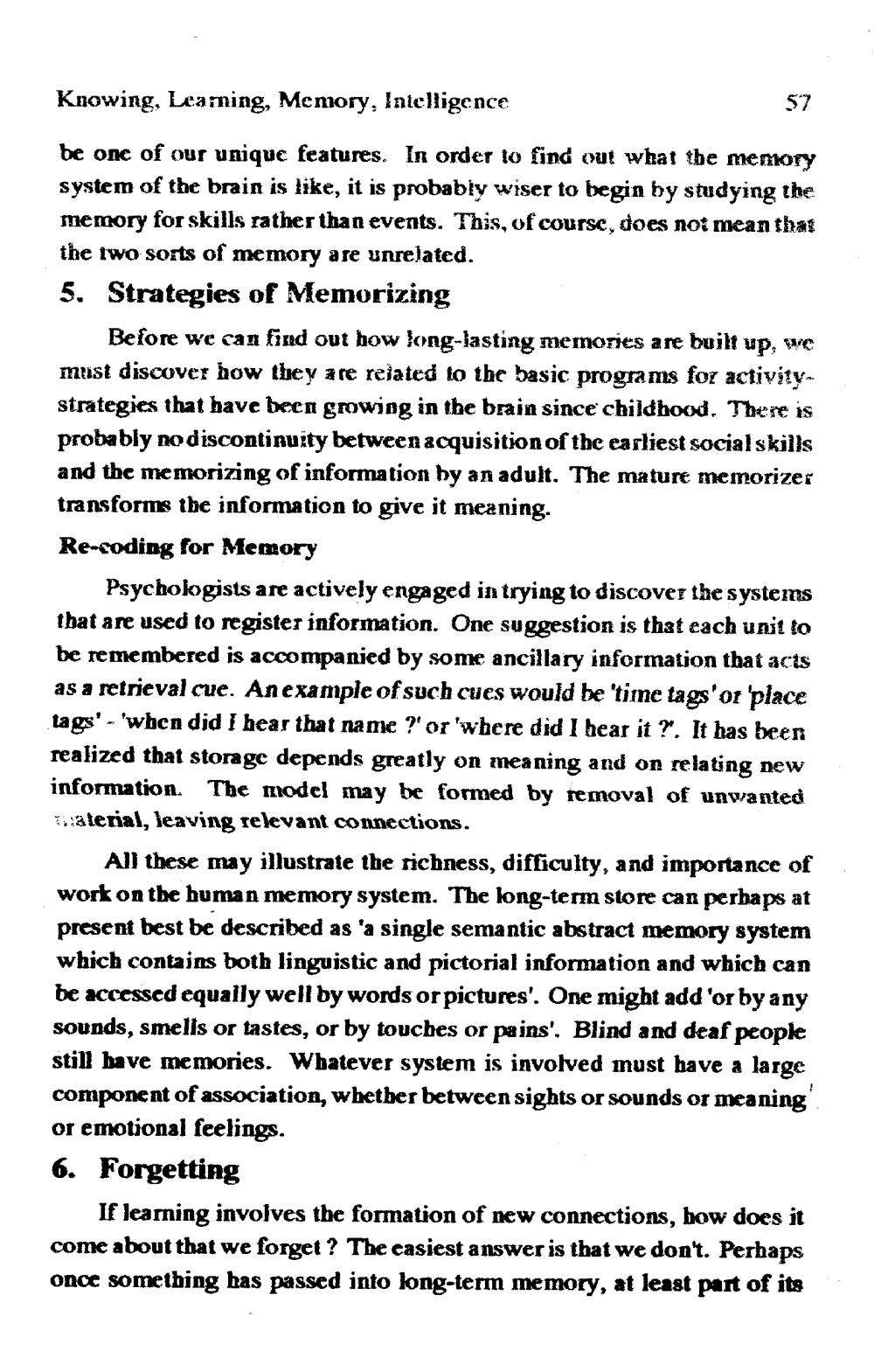________________
Knowing, Learning, Memory, Intelligence
57
be one of our unique features. In order to find out what the memory system of the brain is like, it is probably wiser to begin by studying the memory for skills rather than events. This, of course, does not mean that the two sorts of memory are unrelated. 5. Strategies of Memorizing
Before we can find out how long-lasting memories are built up, we must discover how they are related to the basic programs for activity strategies that have been growing in the brain since childhood. There is probably no discontinuity between acquisition of the earliest soc and the memorizing of information by an adult. The mature memorizer transforms the information to give it meaning. Re-coding for Memory
Psychologists are actively engaged in trying to discover the systems that are used to register information. One suggestion is that each unit to be remembered is accompanied by some ancillary information that acts as a retrieval cue. Anexample of such cues would be 'time tags' or 'place tags' - 'when did I hear that name ?' or 'where did I hear it?". It has been realized that storage depends greatly on meaning and on relating new information. The model may be formed by removal of unwanted material, leaving relevant connections.
All these may illustrate the richness, difficulty, and importance of work on the human memory system. The long-term store can perbaps at present best be described as 'a single semantic abstract memory system which contains both linguistic and pictorial information and which can be accessed equally well by words or pictures'. One might add 'or by any sounds, smelis or tastes, or by touches or pains'. Blind and deaf people still have memories. Whatever system is involved must have a large component of association, whether between sights or sounds or meaning or emotional feelings. 6. Forgetting
If learning involves the formation of new connections, bow does it come about that we forget? The easiest answer is that we don't. Perhaps once something has passed into long-term memory, at least part of its




